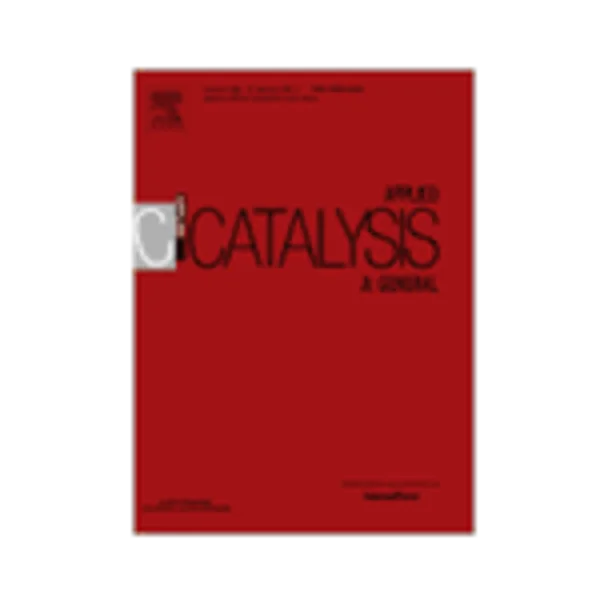-
microspectroscopic insight into the deactivation process of individual cracking catalyst particles with basic sulfur components
جزئیات بیشتر مقاله- تاریخ ارائه: 1392/07/24
- تاریخ انتشار در تی پی بین: 1392/07/24
- تعداد بازدید: 896
- تعداد پرسش و پاسخ ها: 0
- شماره تماس دبیرخانه رویداد: -
the effect and localization of thiophene-like poisons were studied on fluid catalytic cracking (fcc) catalyst at the individual particle level. the thiophene-like poisons interact on the brønsted acid sites of the catalytic materials, forming oligomeric carbocations and coke species, which absorb and emit light in the visible region. the matrix components are not active in the formation of those light absorbing species. in contrast, zeolite y and zsm-5 were very active in inducing oligomer formation and the product distribution was different depending on the zeolite pore structure. comparison of thiophene results with alkane and alkene catalytic cracking studies reveal that fcc particles have more affinity to react with thiophene molecules compared to n-hexane, but 1-hexene may compete with thiophene in the formation of carbocationic species on brønsted acid sites. moreover, a different reactivity was observed in thiophenes with distinct electron withdrawing/releasing substituents and molecular sizes. our results demonstrate that the carbocations are coke intermediates, and the fcc particles containing zeolite y promote to a higher extent coke formation: the large supercages allow the accommodation of more bulky coke species. on the other hand, fcc particles containing zsm-5 stabilize the carbocations within the narrower cylindrical pores, diminishing coke formation. confocal fluorescence microscopy can resolve the location of sulfur components at the single particle level with submicron resolution. fluorescence microscopy images reveal heterogeneous domains with highly bright fluorescence across the fcc particles, which are attributed to the selective formation of oligomeric carbocations and coke species on the zeolitic material. the presence of thiophenes with different substituents and sizes was also studied by this approach. this demonstrates the potential of confocal fluorescence microscopy to identify reactivity differences of thiophene-like molecules on fcc catalyst particles in a spatially-resolved manner.
مقالات جدیدترین رویدادها
-
استفاده از تحلیل اهمیت-عملکرد در ارائه الگوی مدیریت خلاقیت سازمانی و ارائه راهکار جهت بهبود
-
بررسی تاثیر ارزش وجوه نقد مازاد بر ساختار سرمایه شرکت های پذیرفته شده در بورس اوراق بهادار تهران
-
بررسی تأثیر سطح افشای ریسک بر قرارداد بدهی شرکت های پذیرفته شده در بورس اوراق بهادار تهران
-
بررسی تأثیر رتبه بندی اعتباری مبتنی بر مدل امتیاز بازار نوظهور بر نقد شوندگی سهام با تأکید بر خصوصی سازی شرکت ها
-
تأثیر آمیخته بازاریابی پوشاک ایرانی بر تصویر ذهنی مشتری پوشاک ایرانی (هاکوپیان)
-
بررسی پتروگرافی و پتروفابریک میکاشیست های کمپلکس ژان واقع در نوار سنندج – سیرجان
-
سنجش پایداری اجتماعی در محلات شهری (مطالعه موردی: محله های مرداویچ و مفت آباد شهر اصفهان)
-
membrane gas separations and post-combustion carbon dioxide capture: parametric sensitivity and process integration strategies
-
effect of joint opening on p-wave velocity measurement in andesite rock samples
-
studies on stability and coking resistance of ni/batio3–al2o3 catalysts for lower temperature dry reforming of methane (ltdrm)
مقالات جدیدترین ژورنال ها
-
مدیریت و بررسی افسردگی دانش آموزان دختر مقطع متوسطه دوم در دروان کرونا در شهرستان دزفول
-
مدیریت و بررسی خرد سیاسی در اندیشه ی فردوسی در ادب ایران
-
واکاوی و مدیریت توصیفی قلمدان(جاکلیدی)ضریح در موزه آستان قدس رضوی
-
بررسی تاثیر خلاقیت، دانش و انگیزه کارکنان بر پیشنهادات نوآورانه کارکنان ( مورد مطالعه: هتل های 3 و 4 ستاره استان کرمان)
-
بررسی تاثیر کیفیت سیستم های اطلاعاتی بر تصمیم گیری موفق در شرکتهای تولیدی استان اصفهان (مورد مطالعه: مدیران شرکتهای تولیدی استان اصفهان)
-
سنجش کیفیت و ظرفیت گردشگری با تأکید بر الگوهای رفتاری گردشگران در مشهد
-
رفتارشناسی پیامبر اکرم (ص) در تعاملات اجتماعی با یهودیان مدینه
-
مطالعه تطبیقی نظریه تقلید در باب هنر از دیدگاه فلسفه غرب و فلاسفه ایرانی اسلامی
-
experimental assessment of porous material anisotropy and its effect on gas permeability
-
incorporating of two waste materials for the use in fine-grained soil stabilization




سوال خود را در مورد این مقاله مطرح نمایید :